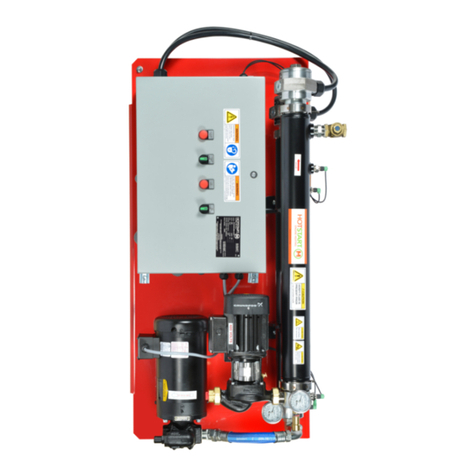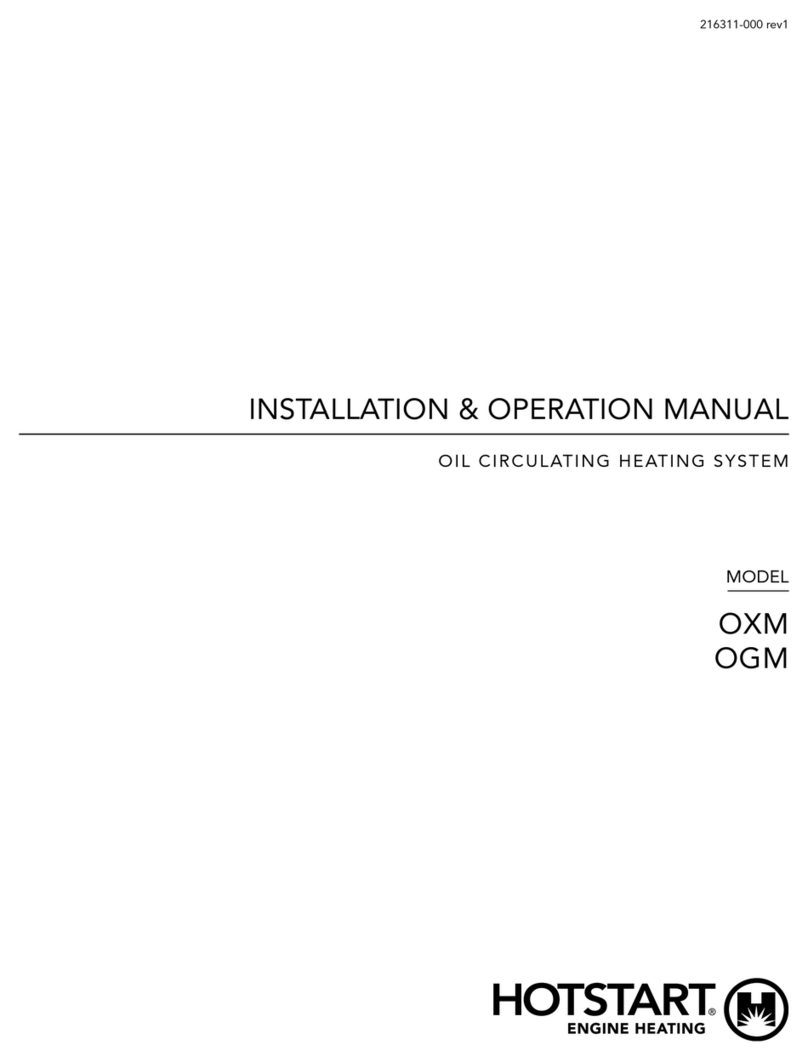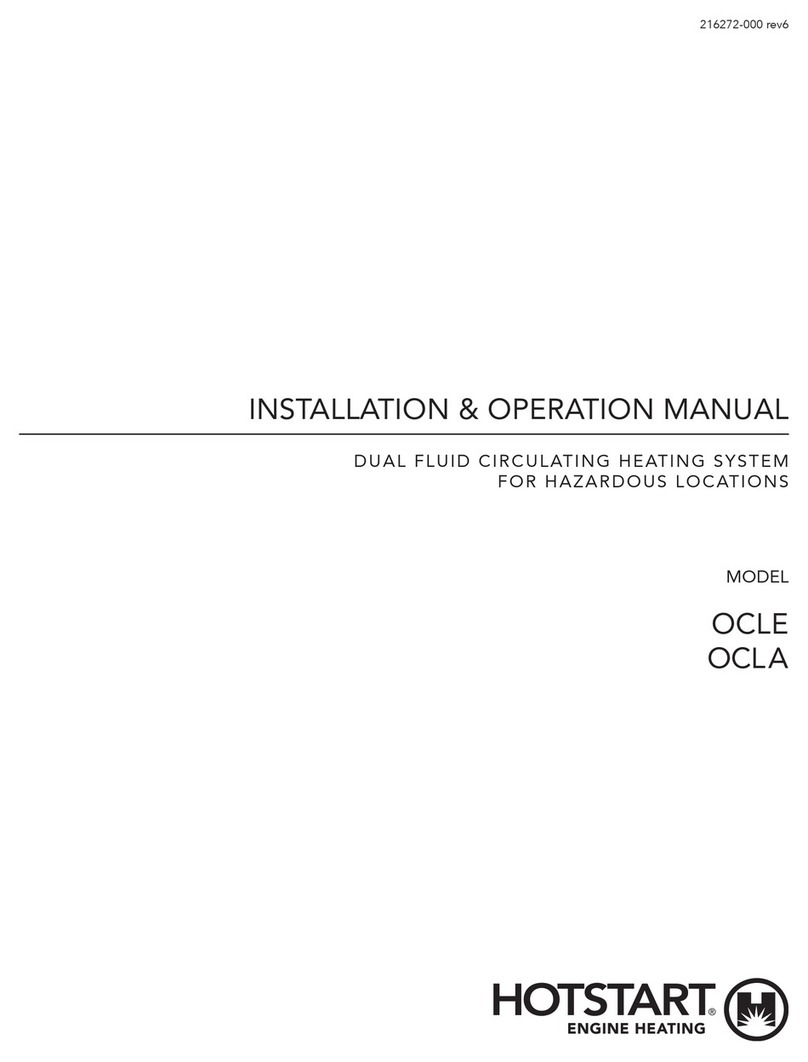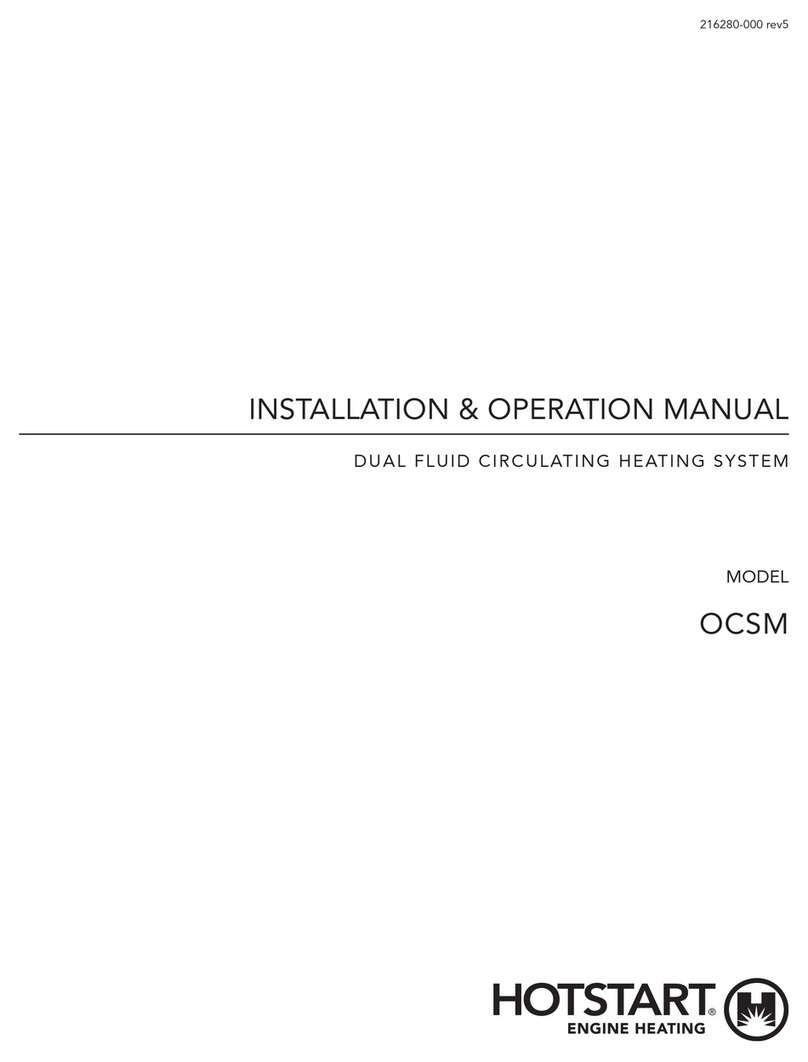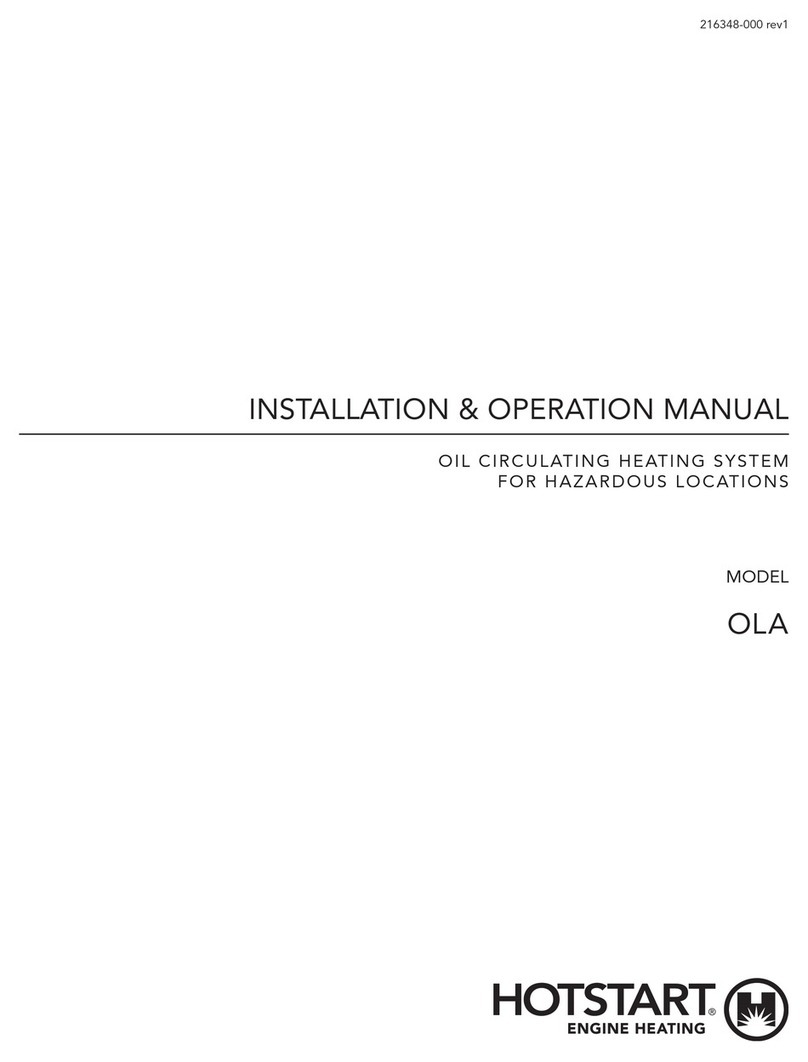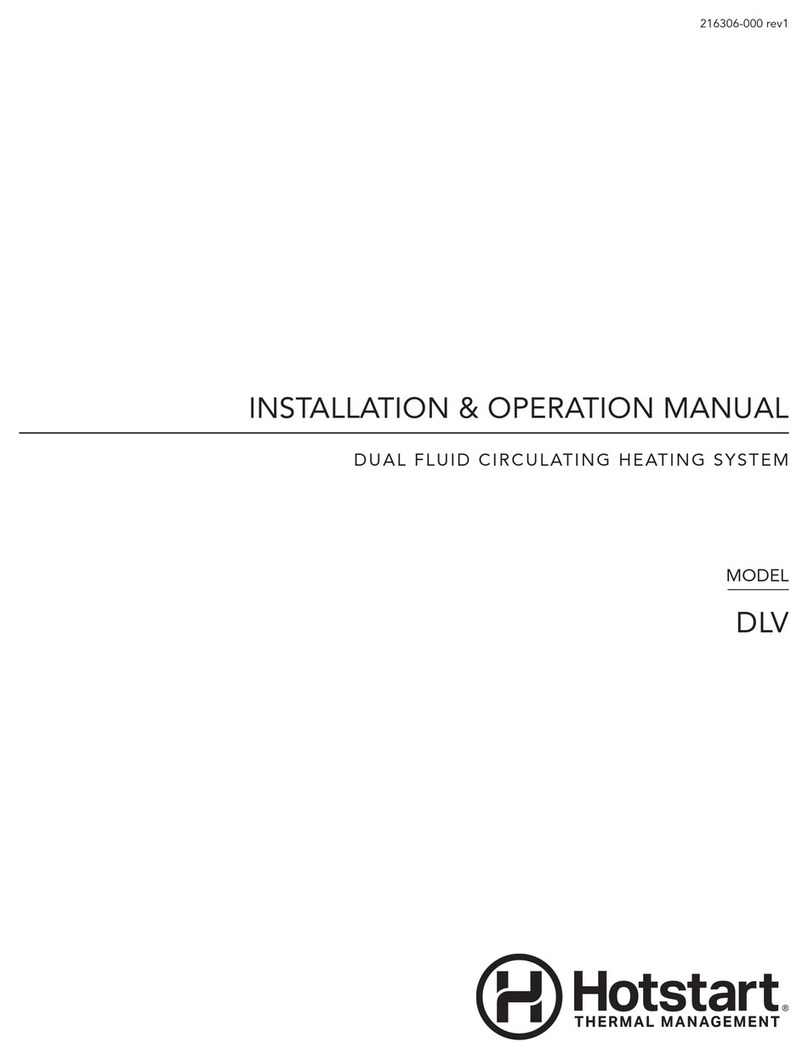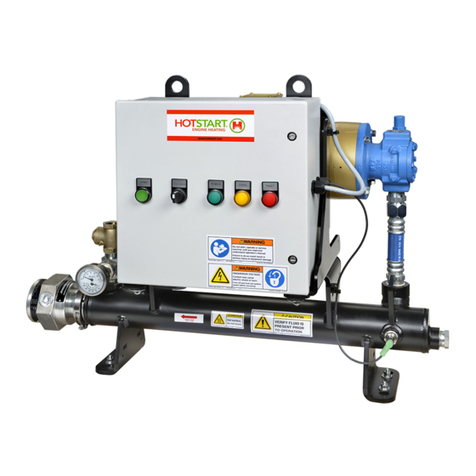
4installation & operation manual | ose heating system
2.1 OIL PLUMBING INSTALLATION
2.1.1 OIL SUPPLY
Installing a short, straight oil supply line with a minimum
of ow restriction is the most important step toward
ensuring heating system longevity. When installing
the OSE oil supply line, refer to the following Hotstart
guidelines:
• Due to the increased viscosity of lubrication
oil, the oil supply line must be as short and
as straight as possible. Any 90° elbows will
reduce the maximum recommended oil
supply length. See Table 1 for Hotstart OSE
oil supply recommendations:
PUMP
INLET
HOSE INNER
DIAMETER
MAX. LINE
LENGTH
MAX. ELBOW
COUNT
1/2 inch
NPT
1 inch 20 feet
(6 meters)
4
NOTE: Each additional pair of 90° elbows will reduce
the maximum recommended line length
by ve feet (1.5 meters). To minimize ow
restriction, Hotstart recommends using
sweeping bends or 45° ttings.
• At a minimum, size the oil supply line per the
pump inlet. NOTICE! Do not reduce the
supply line inner diameter; pump seal
damage will occur.
NOTE: To maximize ow and allow the longest
possible supply line, install the largest
practical inner diameter hose; for most
installations, Hotstart recommends using a
hose with a size larger inner diameter than
the pump inlet.
• Install the oil suction port as low as possible
in the oil sump. NOTICE! Avoid installing
the oil suction port in a location that may
allow debris or sediment to enter the
heating system.
• Hotstart recommends installing a customer-
supplied, swing-type or full-ow check
(non-return) valve to prevent oil owing into
the sump. Install the check valve as close to
the oil supply port as possible.
• To ensure consistent oil heating, it is
acceptable to select a suction port on the
opposite side of the sump.
2.1.2 OIL RETURN
When installing the OSE oil return line, refer to the
following Hotstart guidelines:
• At a minimum, size the oil return line per the
pump outlet. NOTICE! Do not reduce the
return line inner diameter.
Depending on your application, there may be additional
requirements for locating the oil discharge port of the
Hotstart oil heating system:
hFor diesel engine applications, the oil return line
must be routed to the oil discharge port located at
opposite end of the oil sump. See SECTION 2.3.
hFor large-sized (four- or six-throw reciprocating)
compressor applications, the return line may be
routed to the opposite end of the oil sump or
the oil return line may be routed to a prelube
location. See SECTION 2.2.
hFor small- and medium-sized compressors, the
oil return line may be routed to the opposite
end of the oil sump or the return line may be
routed to a prelube location. See SECTION
2.2. If the return line is routed to a prelube
location, Hotstart requires installing a bypass to
the compressor oil sump, including a customer-
supplied tee tting and pressure relief valve.
Should ow become restricted due to low ambient
temperatures, the pressure relief valve along the
bypass line will open and allow heated oil to route
to the compressor’s oil sump. This alternate routing
will allow the heating system to maintain optimal
oil temperature while still providing the necessary
pressure to the prelube system. See Fig. 3.
NOTE: The pressure relief valve must be designated as
full-ow bypass and must be set for a maximum
of 65 psi. Hotstart does not recommend non-
code safety valves for this application.
Figure 3. Small compressor oil heating in lower ambient
temperatures (left). High oil viscosity restricts oil ow and increases
oil pressure. The pressure relief valve opens and allows oil to ow
directly to the sump in addition to the prelube location. In higher
temperatures, the bypass pressure relief valve is closed and oil is
routed directly to the prelube location (right).
Table 1. HOTSTART recommended hose inner diameters, line
lengths and elbow counts for OSE oil supply lines.






